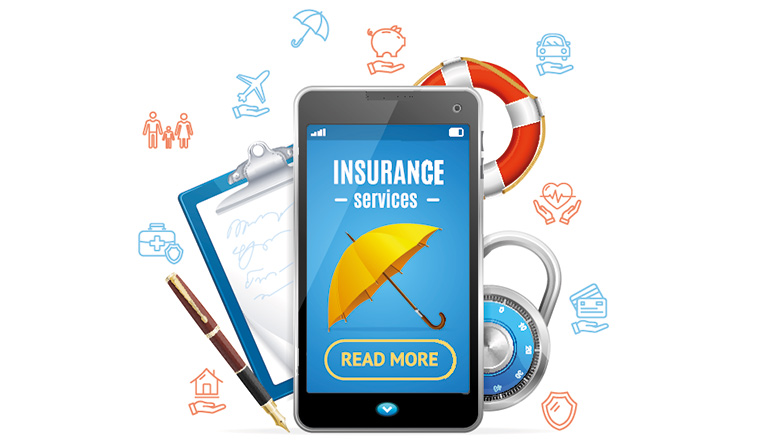HENRY MINTZBERG once said, “When the world is predictable you need smart people, when the world is unpredictable you need adaptable people.” None of us will remain immune to the unpredictable and dramatic changes in every sphere of human existence driven by technology and its side effects. The implications of these changes on our food chain, health, transportation, communication, environment, jobs and economies in general are unknown today. Despite challenges of predicting the future, there is solace in the fact that over the ages, human ingenuity has made life better for society at large and adaptation to these changes will remain the only constant.
Technology evolution is one of the largest mega trends disrupting the world at large and insurance business is no exception. Today's consumers are more informed, more empowered and more social with higher-than-ever expectations of their service providers. They demand immediate gratification and tend to be impatient when they do not get what they want. They live and operate in a hyperconnected world of disparate service providers leaving behind a complex trail of digital footprint.
Traditional insurance models were largely product-centric and channel-marketing driven. With advancement of technology that we saw in the last decade, terms such as paperless, cashless, branchless are passé. The new-age insurers will turn the traditional model on its head with the customer at the centre and a suite of digital technologies, services and ecosystems will be used to tap the customer. If incumbents are unable or unwilling to change to this business model, they will cede space to new participants. With rapid changes in the operating landscape, new-age insurers will need to invest in robust mid-term and long-term digital strategies. Such digital strategies will help insurers notch up their digital quotient across the insurance value chain and exploit complete value of customer potential while being available for the consumer, 24X7, for instant servicing and query resolution. Such strategies will also aid to improve business quality, drive efficiency, reduce human dependence, make processes real-time and accurate while mitigating risks of fraud.
As per Global Findex Report released by the World Bank, the number of bank account holders in India rose from 35 per cent of the adults in 2011 to 80 per cent in 2017. Given the rising trends of financial inclusion in the country, the insurance distribution landscape is also broadening laterally. Besides proprietary brick and mortar channels like agency and direct sales, insurers have partnered with players like traditional banks, NBFCs, MFIs, payments banks and small finance banks to foray into insurance selling. With such a diverse set of distribution partners, it is important for insurers to have agile multi-distribution plug and play platforms. Such platforms can connect to hundreds of distribution partners at short notice with minimal effort, so that insurers can deliver their solutions across the length and breadth of the country on the back of the distribution partner's presence. Consumers will largely benefit through such platforms since access to insurance products will be far easier, servicing avenues will widen and transparency on the products being offered will enable them to make the right choice at the right price and convenient location.
With every passing day, consumers are shifting to online market places driven by aggregators. Until a few years ago, who would have thought the largest cab hiring company would not be owning a single car or the largest global retailer would actually be a technology company powered by Artificial Intelligence and analytics. These new-age consumers exist, live and breathe within these so called 'ecosystems' which span across diverse platforms in e-commerce, transport, telecom, health care, media, food delivery and social network, to name a few. Progressive insurers have already started work on building their own ecosystems or partnering with players owning these ecosystems. They see this as an avenue to exponentially increase their distribution penetration, keeping the operating expenses well within control. Consumers in these ecosystems can be 'nudged' at an appropriate time for an insurance product or an insurance service based on the activity or transaction the consumer is doing within the ecosystem. For example, a consumer buying baby products online can be nudged for buying a children's insurance plan or a consumer crossing a certain age threshold can be suitably nudged to buy an additional term cover on his insurance policy. Such ecosystems and platforms will enable non-intrusive insurance selling and right products can be made available at the right time to such consumers. In addition, given that the partner understands the consumer well, this information can be leveraged by the insurer to expedite and ease the issuance, underwriting and servicing of policies.
Automation and robotics technologies allow for intelligent and predictive capabilities offering virtual advice, automated decisions which are real-time and accurate with no human dependence or need for branch infrastructure. Banking, financial services and insurance sector, including some leading insurers, have invested in AI and robotics-based solutions in their technology stacks, which include chat-bots, emails and Twitter bots for answering sales and servicing queries. These bots automatically read, understand, categorise, prioritise and respond to customer queries within milliseconds, giving instant response to the consumer. Similarly, mobile servicing platforms have literally taken the 'branch office' to the customer's doorstep where servicing transactions can be performed on a mobile app at a place and time of customer’s choice and convenience. Besides, automation bots which leverage capabilities like optical character recognition, neuro-linguistic programming, voice and image recognition have streamlined backend and mid office processes to make them real time, error free and human independent. In perspective, these advancements have simplified the customer journeys both at new business and service stages, making them simple and hassle-free.
With huge volumes and variety of data being collected near realtime through application programme interface and availability of sophisticated methods for analysing and harnessing these data insights, big data, AI, machine learning and analytics are getting increasingly institutionalised across data intensive industries like insurance. Perhaps, data may become a new revenue stream for players and we may see the breakout of data-as-a-service (DaaS) strategies across players. In addition, cloud infrastructure allows firms to use and process this humungous enterprise data to enable fast and accurate decisions at the click of a button with abilities to scale on demand with no infrastructure limitations. These advancements have helped insurers in predictive analysis across areas of the value chain like reduction in claim settlement time from weeks to days, fraud analytics at the time of new business and payouts, product propensity model, persistency and employee attrition to name a few, ultimately ensuring the end consumers are benefitted.
Another key area the insurance sector management teams need to stay sharply focused on is attracting and retaining talent. Insurers which offer superior employee value propositions will enjoy greater loyalty in an era where the workforce is younger, geographically mobile, technologically skilled, demands more flexibility, strives for work-life balance and expects greater learning opportunities. Self-paced online learning, geo-location based field force and partner tracking, hyper-personalised incentive programmes, flexible work spaces and location or office agnostic work tools enabled through iOT and mobility devices will be the key drivers to attract and retain talent while making them successful.
Given the pace of technology that is sweeping the world on one side and the large under-penetrated consumer base which is far behind the digital influence, what remains to be seen is will the insurance sector take the plunge and adopt a technology embracing position or will it stand along the sidelines and play catch-up, learning from the best practices of other industries over time. How quickly incumbents adapt to these inexorable changes will determine the size of their share in the next generation of the insurance industry.
Mulla is chief operating officer, HDFC Life Insurance Company Limited.




